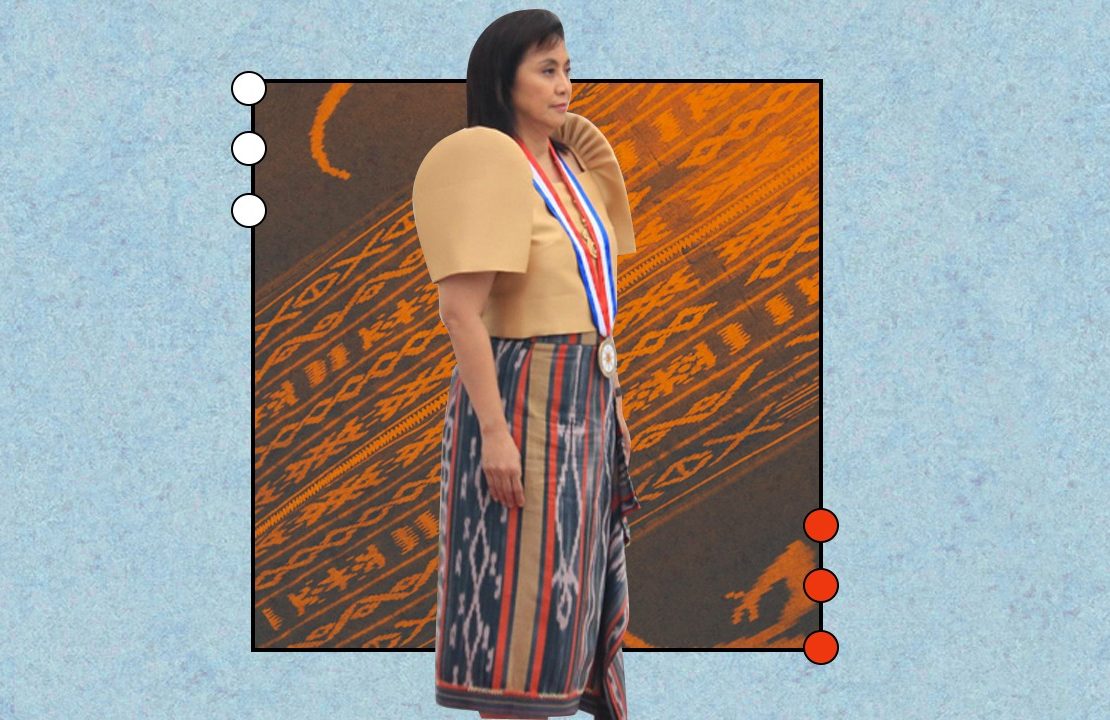Anyone who’s ever been on the internet in the past decade knows that cultural appropriation is a hot button issue. Saying it is the conversational equivalent of throwing a firecracker inside a closed room: it’s going to start a fire. This is why most people know to tread lightly when it comes to this topic. Emphasis on most.
Case in point: this blogger-cum-suspended attorney posted a picture of Leni Robredo wearing an ikat weave skirt, claiming that the skirt she was wearing suspiciously looked like an Ifugao death blanket. “Moral of the lesson? The VP should read up on cultural appropriation. Or in this case, mis appropriation. Translation: Pa uso ang VP. Alam kaya nya yung suot nya? Nagpaalam o bigay pugay ba sya sa kulturang lumikha nun? Ni rerespeto ba nya? O pa-cute lang as usual?”
An Ifugao group that specializes in weaving textiles then made their own statement, pointing out that while, yes, the vice president was wearing an Ifugao fabric, it’s not the sacred one reserved for the dead. The group also pointed out that the vice president has aided many Ifugao weavers through her Angat Buhay program.
While the blogger has since retracted her statement and owned up to her mistake (a rare thing on the internet), it doesn’t stop the post itself from being iffy.
Let me just point out that the issue when it comes to cultural appropriation is permission. Did the borrower ask permission from the borrowed culture to use this thing? Is it an example of exploitation? These are the questions you need to be asking, and you can’t bring it up without getting those answers first. When you bring up a case of cultural appropriation, you’re not trying to bring down the person you’re accusing, you’re trying to bring to light a problem that’s been systematically dogging a culture. If you’re not doing that, then who are you fighting for, really? (It should be noted at this point that the blogger took part in a campaign to impeach the vice president.)
Hastily calling out appropriation can also expose your own biases: as some have pointed out, the ikat weave is a common design in Southeast Asia. Making it out as a funerary blanket shows that you’ve conflated the two designs together.
But let’s not start throwing our own pitchforks at the person who posted this, and instead turn this into a teachable moment for all of us. Don’t be too quick to call out something as cultural appropriation. If you do that, you run the run the risk of talking over the culture you’re supposedly fighting for.
This is important because cultural appropriation is a huge problem here, especially when it comes to local weaves. (Read: Underpaid and unacknowledged: The current state of Filipino weavers) By talking over the weavers with a false case, you’re muddying up the issue, and other people are going to be even more dismissive of the topic. That makes it harder for the weavers to speak up about actual cases of exploitation. Instead of helping, you’ll end up making things worse.
That’s not a good look at all.
Get more stories like this by subscribing to our newsletter here.
Read more:
2017 appropriation lesson: Don’t use sacred Ifugao textiles on your gown
Before you judge, here’s what really happened between Whang Od and Manila Fame
Read more by Zofiya Acosta:
A glossary of terms you need to stay woke in 2019
Check out these diverse new restos in the South
What happens when your dream vacation turns into a nightmare?
Writer: ZOFIYA ACOSTA
ART TRICIA GUEVARA




